- Holiday Shop
- Home & Lifestyle
- Women
- Men
- Juniors
- Baby & Kids
- Toys
- Shoes & Accessories
- Jewelry
- Beauty & Salon
- Inspiration
- Sale
Women
shop all
same-day pickup
new arrivals
sale
clearance
25% Off Nike
40% Off Levi's
Shoes & Accessories
shop all shoes
shop all accessories
same-day pickup
sale
clearance
25% off Athletic Shoes
Jewelry
shop all
jewelry education
sale
clearance
$399 1 Ct. T.W. Natural or Lab-Grown Diamond Jewelry in 10K Gold
Decorative Bedding Buying Guide
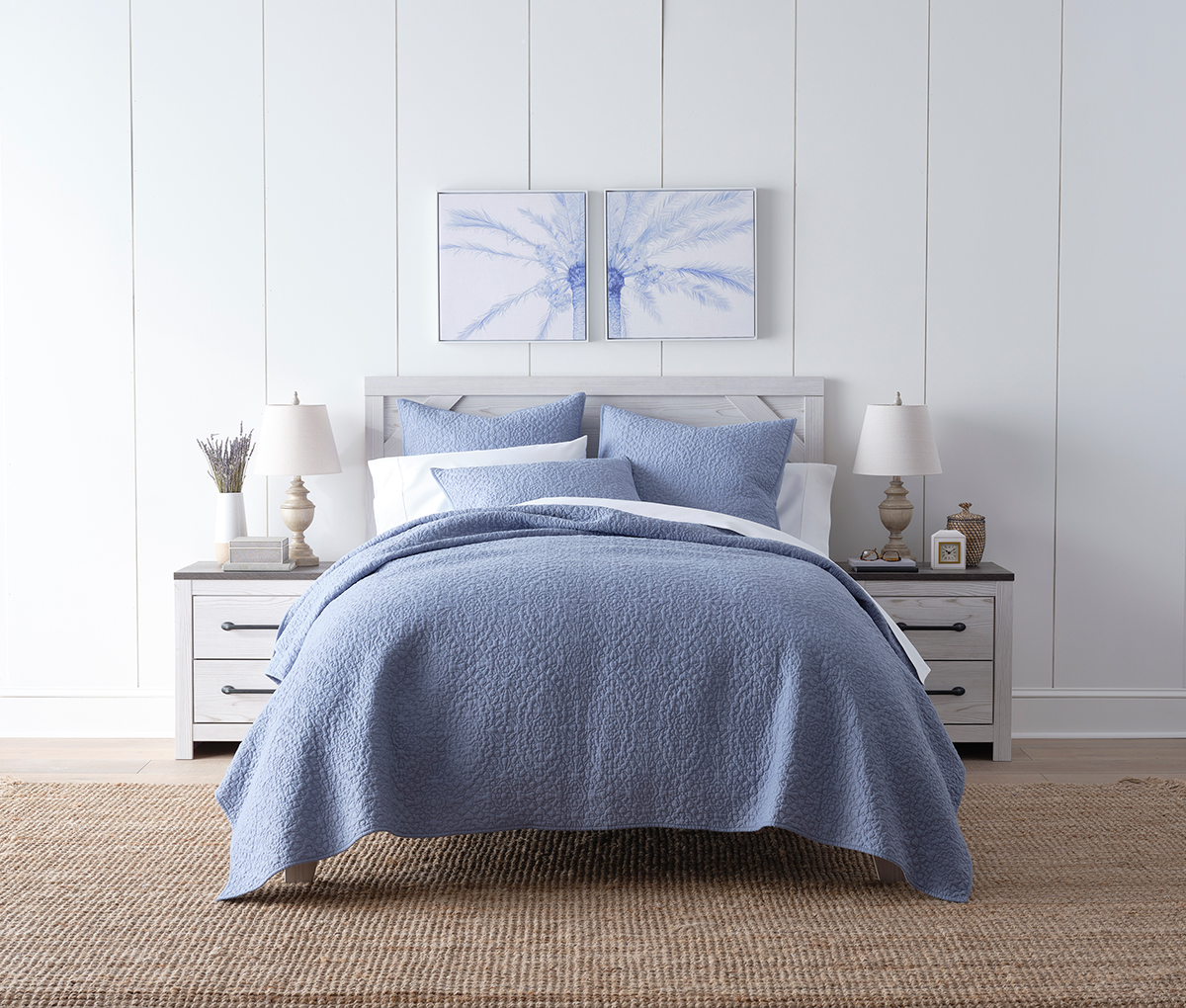
JCPenney has the answers to all your bedding questions, tips on the proper care, and differences between materials and different types of bedding.
Whether you’re looking for something to keep warm through the winter or lightweight coverlet to keep you cool in the summer, we’ve got the bedding that will fit right in – and that’s nothing to snooze at.
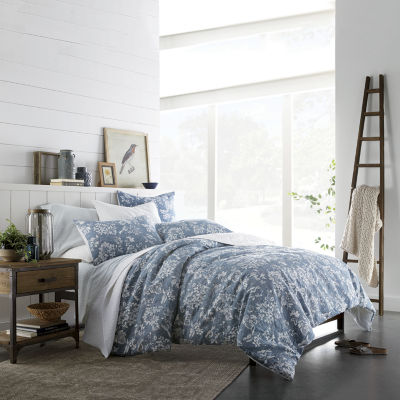
Comforter
Comforters can be filled with multiple materials that determine the weight and warmth. Whether you’re looking for easy care or luxurious, there are a variety of styles to let your inner decorator shine.
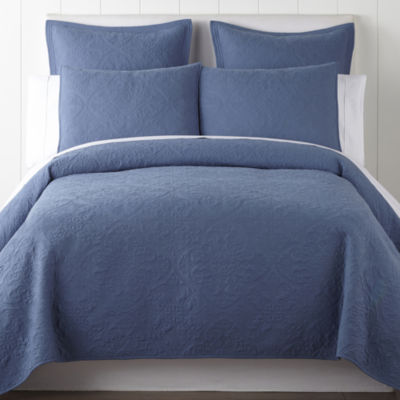
Quilt
A quilt includes three layers; the top, a layer of batting and the bottom layer of the quilt. Many quilt styles include piecing. Quilts are lighter weight than comforters, making them a good option for warm climates or for adding additional warmth in cooler climates.
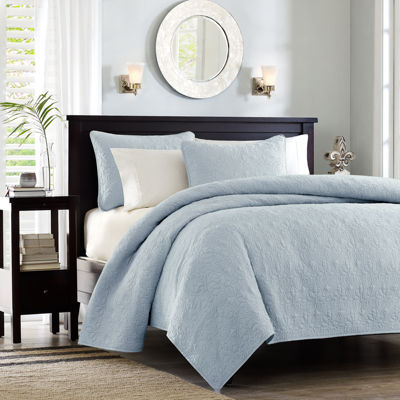
Coverlet
A lighter weight bedding designed to be used a layering piece with coordinating comforters or bedspreads. They’re usually quilted or woven and include decorative stitching.
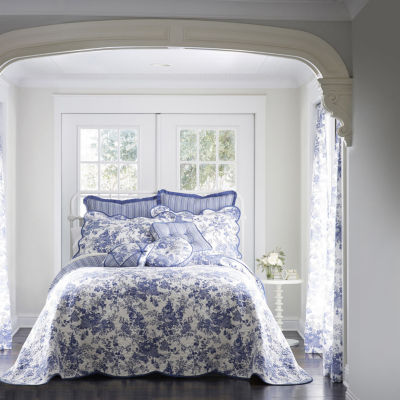
Bedspread
Bedspreads are intended to cover the entire bed and have a longer drop that skims the floor. Because of the added length, there is typically no need for a bed skirt.
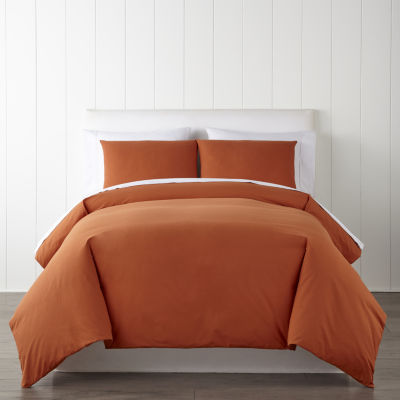
Duvet Cover
Pronounced “du-vay”, these include no filling and use a comforter (typically down or down-alternative) that is sold separately to insert and ties or zippers. The advantage to using a duvet is the ability to change styles easily with the warmer or cooler sleeping. Duvets can be easily removed to machine wash.
Decorative Bedding Extras
Bed Skirt
Dropping down to the floor, a bed skirt’s purpose is to hide unsightly box springs. They come in a variety of styles such as tailored, ruffled, or crinkled. Because bed heights can vary, it’s important to measure to ensure the bed skirt you want will have the correct length.
Euro or European Pillow
A large square pillow, usually measuring 26x26”. It’s sold as either a filled pillow or a sham that’s used as the backdrop of the bed. It’s recommended to style them using two to three pillows on a queen-size bed.
Sham
Made to fit over bed pillows or accent pillows, shams are decorative pillowcases that typically feature an opening in the back or the side so you can remove easily for washing.
Sizes
Sizing based on mattress size
| MATTRESS | DIMENSIONS |
|---|---|
| TWIN | 39x75" |
| TWIN XL | 39x80" |
| FULL | 54x75" |
| QUEEN | 60x80" |
| KING | 78x80" |
| CALIFORNIA KING | 72x84" |
CARE TIPS
Tip 1
How often you choose to launder your bedding is a matter of personal preference and circumstances, but in general bedding should be washed every 1-2 weeks. Most modern-day washers and dryers can fit bedding in them so you can wash in the comfort of your own home. Launder bedding based on manufacturer’s instructions.
Tip 2
Fluff or shake regularly to maintain even distribution and prevent lumps.
Tip 3
Since sunlight is helpful in killing germs and bacteria, you can air your bedding outside for a few hours twice a year to maintain freshness.
Tip 4
If you switch you bedding out with the seasons, be sure to store it in breathable bags. Remember that plastic traps moisture and can cause mildew.
Tip 5
Use gentle detergent to prolong the life of your bedding.
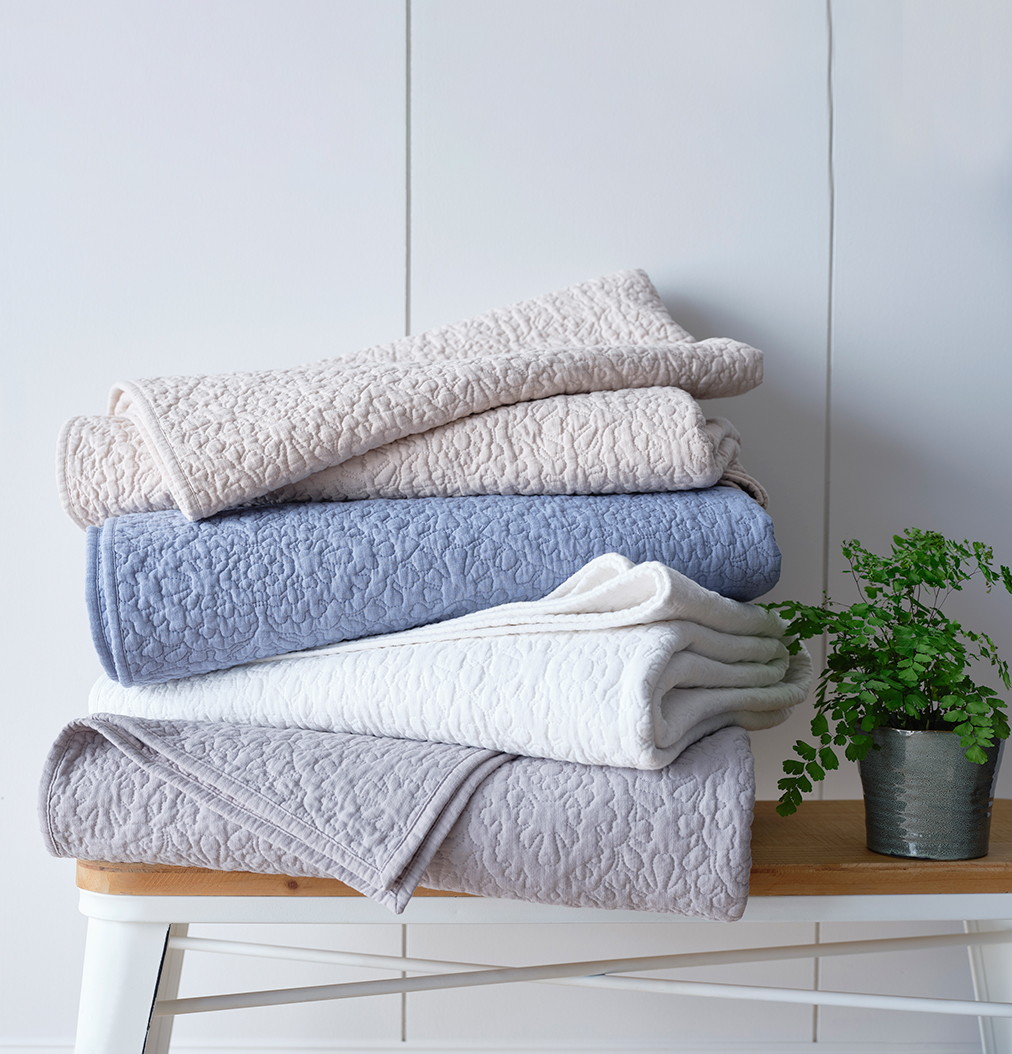
Bedding Materials to Know
Blends: Two or more fibers mixed in the yarn or the fabric. Cotton and polyester are typically blended to improve wrinkle resistance and breathability.
Brushed Microfiber: Woven with yarns made up of ultra fine synthetic fibers and brushed to give a soft peachy feel. Easy to launder and wrinkle resistant option that’s known to be extremely soft and durable.
Chenille-plush: TwoFabric that’s created when cotton or cotton-blend tufts are sewn into a base cloth of muslin sheeting. The more tufts that are sewn in, the more luxurious and heavyweight the fabric is. The tufts can be sewn to create an all-over pattern or a pretty floral or paisley design.
Cotton: Natural fiber that is cool to the touch and can be more comfortable and breathable than a manmade fabrics.
Damask: A type of jacquard with firm, lustrous fabric made with flat patterns in a satin weave on a plain-woven ground.
Dobby: A technique used to weave pattern into fabric. Typically, a small geometric or stripe motif is created.
Embroidery: Decorative stitching using yarn to create design on bedding and accessories.
Jacquard: A special type of weaving that uses warp yarn to create intricate patterns.
Linen: A natural material derived from the flax plant. Thick and thin areas of the fiber create a unique texture. Linen has good strength, low pilling and linting tendencies and good breathability.
Matelassé: A special weaving technique, typically using cotton yarns, that creates a quilted or puckered appearance.
Percale Cotton: A closely woven, plain-weave fabric, usually 300 threads per inch or less. The smooth and crisp appearance can create a tailored look but still works great for everyday use.
Pieced: Multiple fabrics sewn together in a decorative pattern usually found in quilts and bedspreads for an heirloom look.
Polyester: Synthetic fiber that’s durable and more wrinkle and shrink resistant than natural fabrics.
Ruching: Pleated, fluted or gathered fabric that’s used for decorative purposes.
Sateen: A weave in which yarn will float across four or more different yarns, creating a smooth, lustrous surface with a soft hand. Sateen or satin weaves can have a much higher thread count than plain weaves. The term “sateen” is used for 100% cotton and “satin” is used for silk or synthetic fabrics. The light sheen of sateen creates either a relaxed or elegant look.
Shirred: Gathered fabric that’s decorative.
How to Style and Layer Your Bed
After your bedding basics and sheets are taken care of, it’s time to style the top of the bed. This includes several fun layering pieces like your quilts, coverlets, shams and more. Not sure where to start? We’ll show you how to build your bed from the basics, up.
Layer One (after sheets):
- Duvet Cover – be sure to always fill your duvet cover with a luxurious duvet insert (link to white goods). We love duvet covers because of how easy they are to switch out when your bedroom needs a style refresh, and how easy they are to clean.
- Comforter – similar to duvets covers, these will be the focal point of your bed. Comforters have super soft fillings, and typically come with shams to make styling your entire bed easier than ever.
Layer Two (layered with duvet cover or comforter):
- Quilt/Coverlet – these are extra versatile, because they can be styled underneath, or on top of your duvet or comforter. Because they’re usually lightweight, these are perfect for layering with your duvet or comforter in the winter, while adding a pop of color or an interesting texture. In the summertime when you want to stay extra cool, you can use this instead of your duvet.
- Bedspread – though very similar to quilts/coverlets, bedspreads are usually larger to cover your entire bed (including the box springs and mattress).
Layer Three (on top of quilt, coverlet, duvet cover or comforter):
- Shams – these are decorative shams that are styled in front of your pillowcases. They usually coordinate with your duvet cover or comforter to tie your bed together. These also come in Euro sizes that are especially great for larger beds like Kings.
- Decorative Pillows and Throws – now that your bed is mostly styled, be sure to add some extra personal touches with decorative pillows and throws.
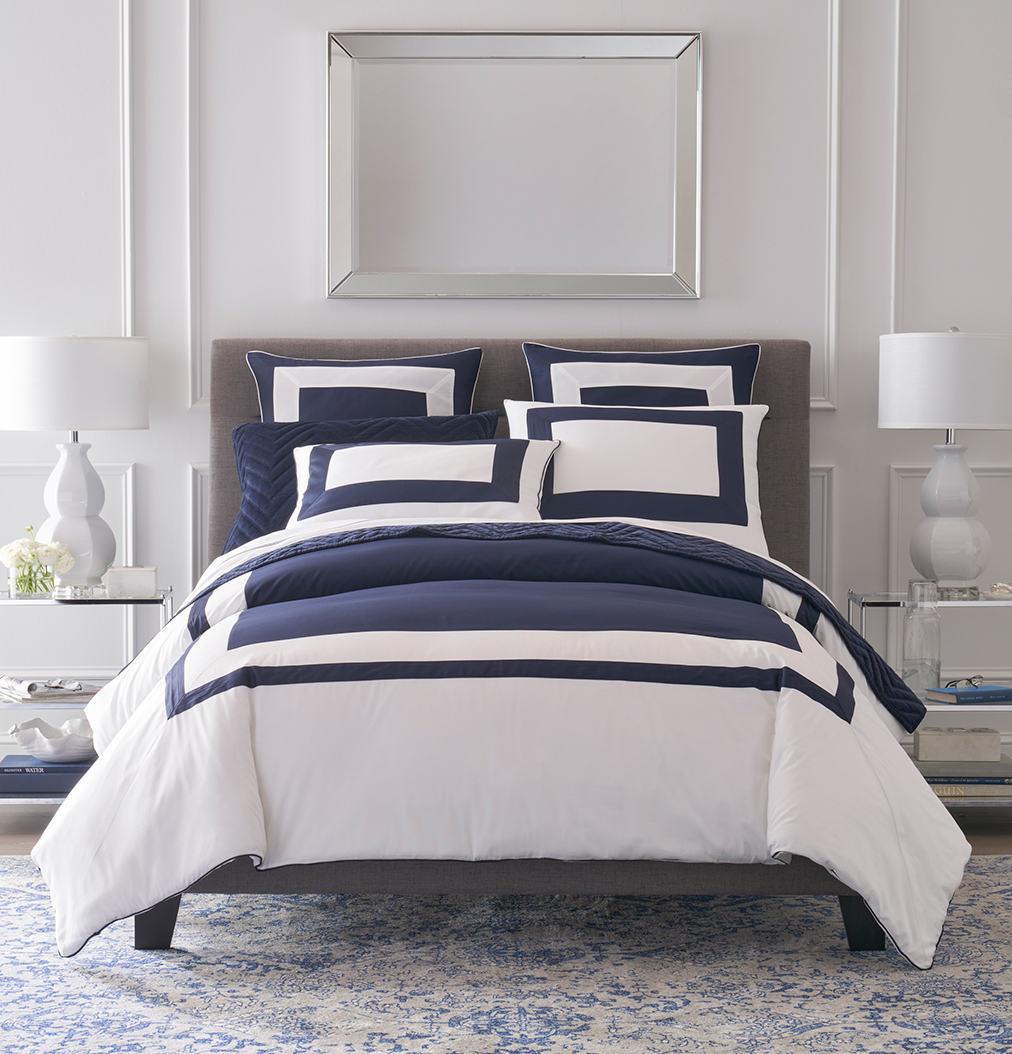
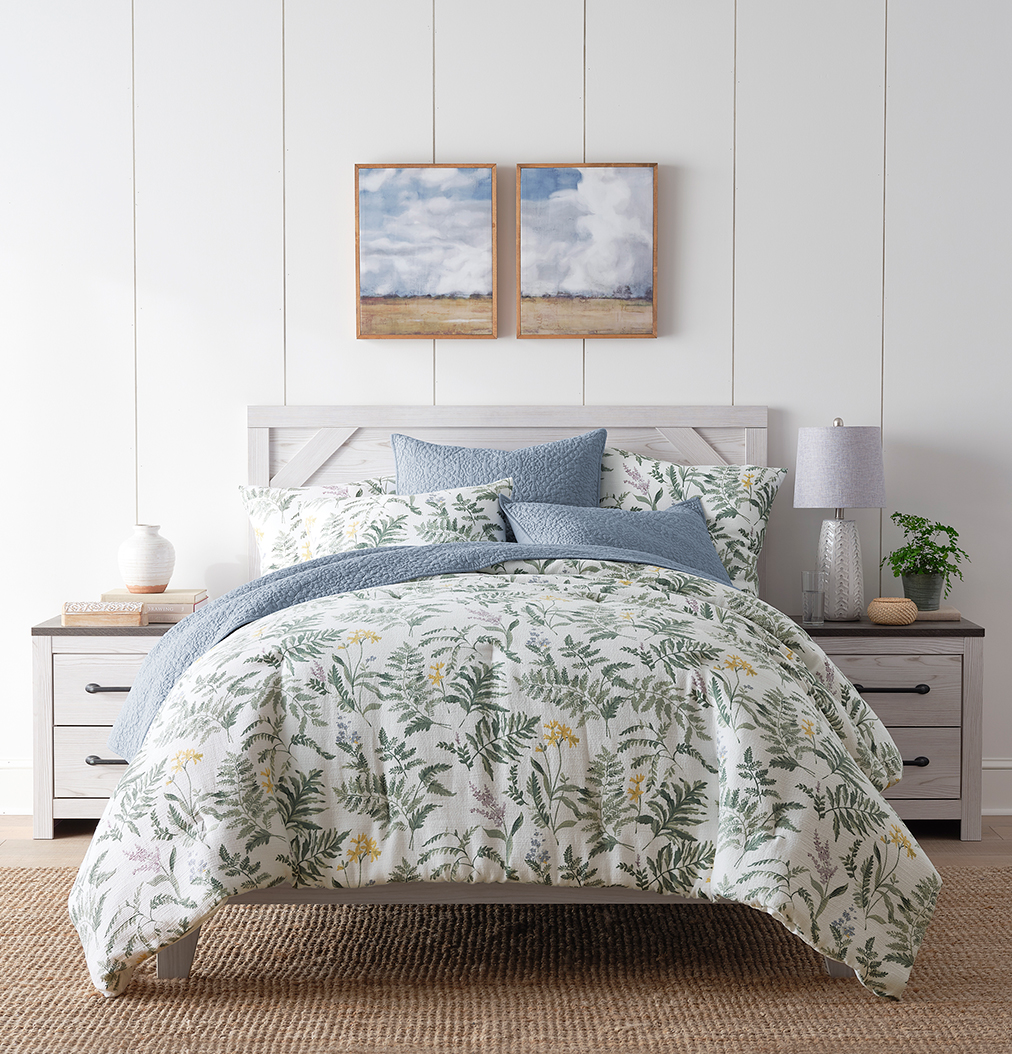
Frequently Asked Questions:
What size are throw blankets?
- Throws are typically smaller than bed blanket, but they can come in different sizes, the standard throw blanket is 50 x 60 inches. A queen throw blanket is 60 x 80 inches and a king throw blanket is 72 x 80 inches.
Which bed sheets are the best?
- Choosing the right sheet fabric really comes down to personal preference. Sheet fabrics differ in hand feel, appearance, durability and warmth.
- 100% cotton or cotton blends are more comfortable and breathable than sheets made solely from synthetic materials such as polyester.
- Percale sheets are lightweight and have a cool and crisp feel. If you are a hot sleeper, percale sheets may be the best option.
What bed sheets are the softest?
- Sateen sheets are known for their smooth and silky hand feel and are also available with wrinkle resistant technology. If you tend to sleep cool, sateen sheets are a great choice.
- If you are looking for durability and easy-care, Microfiber is a great option. Microfiber sheets are made from polyester and are less expensive than cotton. They are also very soft, highly durable and wrinkle resistant.
- Flannel sheets are made with a thick yarn so you can stay warm and cozy all night. Our flannel sheets are also brushed and get softer with every wash.